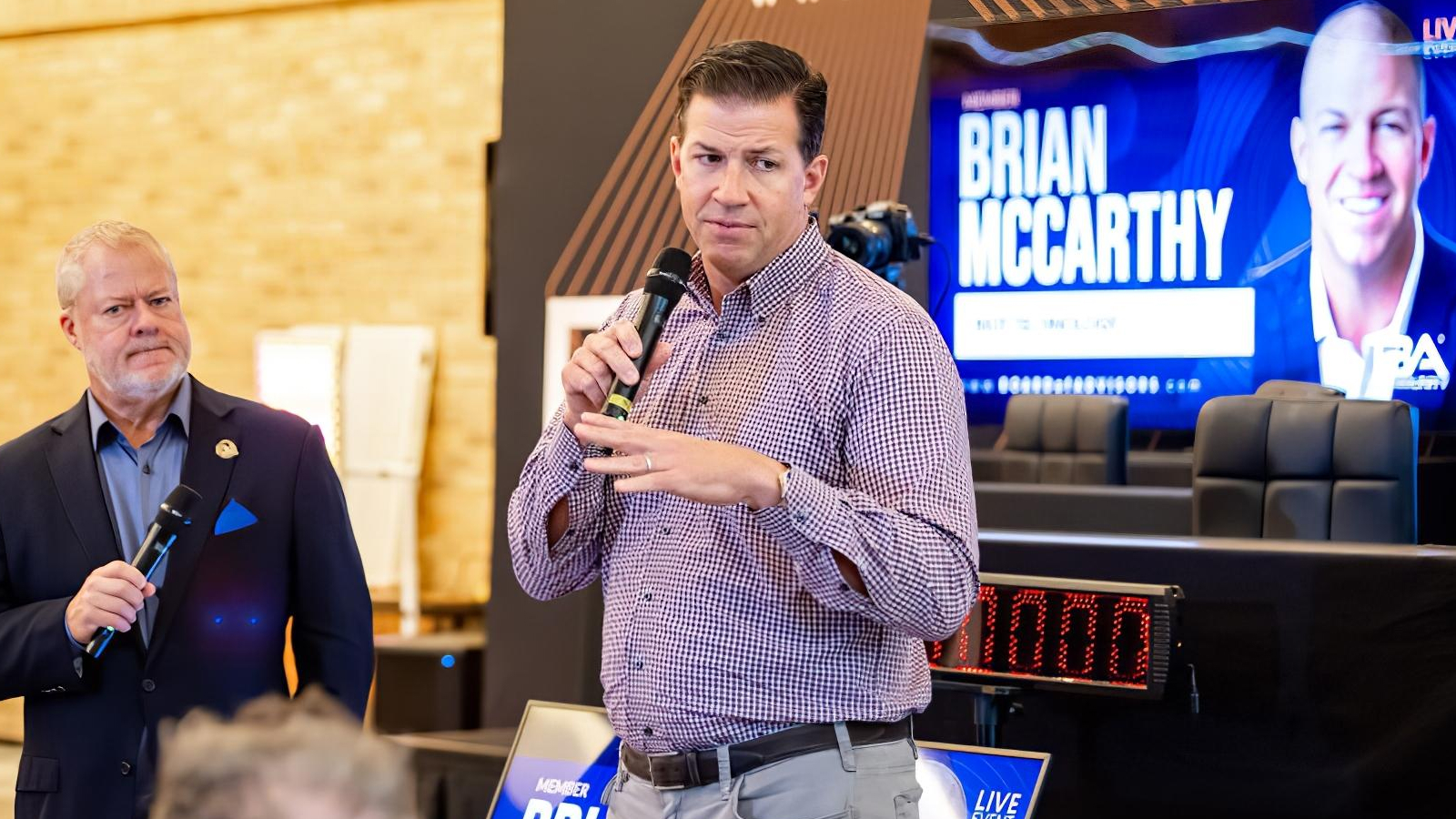The Builder Behind Riot: Brian McCarthy’s Vision For Intelligent Homes
For over two decades, Brian McCarthy has shaped the trajectory of residential construction in New Mexico. As co-owner of Abrazo Homes and founder of RIoT Technology, his focus lies not only in building homes, but in designing systems that make living in them smarter, safer, and more efficient.

From Builder to Systems Innovator
For over two decades, Brian McCarthy has shaped the trajectory of residential construction in New Mexico. As co-owner of Abrazo Homes and founder of RIoT Technology, his focus lies not only in building homes, but in designing systems that make living in them smarter, safer, and more efficient.
With a background in political science from the University of St. Thomas in Houston and an MBA from the University of New Mexico, McCarthy brought a strategic perspective to the building industry early on. Abrazo Homes, which he co-founded, has delivered over 1,100 homes in the Albuquerque and Santa Fe markets and has been repeatedly recognized as a top private company in New Mexico.
Addressing the Fragmented Smart Home Market
McCarthy recognized a growing demand among homeowners: smart home features that truly work together. While technology was advancing, the integration process had become fragmented and inconsistent, often left as an aftermarket task for homeowners. The result was a confusing mix of devices, incompatible platforms, and missed opportunities.
According to Forbes, after conducting extensive research into how to simplify smart technology integration, McCarthy launched RIoT Technology, a startup focused on delivering an integrated, installation-ready system tailored for production builders. At the time of publication, 60 homes were already online with RIoT.
Rather than relying on homeowners to piece together devices post-construction, RIoT offers a cohesive suite of sensors, valves, and devices installed during the building process, without requiring builders to overhaul their workflows or subcontractors.
Practical Advantages Built Into The Structure
RIoT’s system monitors essential components of the home, including leaks, weatherization, energy use, and air quality, all via an in-home interface. Installing these systems during construction, rather than retrofitting later, comes with distinct advantages. For example, the kit allows for a separation of internal and external plumbing, so homeowners can shut off outdoor systems before the first freeze, preventing one of the most common warranty issues: burst pipes.
The platform also includes smart filters that detect pressure drops caused by buildup in the filter media. When this happens, McCarthy ships a replacement filter to the homeowner. This small intervention helps avoid HVAC failures and improves energy efficiency, potentially lowering bills by up to 15%, according to Constellation Energy.
“RioT’s system monitors essential components of the home, including leaks, weatherization, energy use, and air quality. All via an in-home interface.”
From Data to Better Design
By embedding monitoring capabilities at the core of the home, RIoT shifts the conversation from assumptions to evidence. Instead of relying on general rules—like changing air filters every six months—the system can trigger alerts based on real-time performance.
McCarthy believes this data-driven approach will eventually help buyers make more informed decisions when evaluating energy-saving upgrades. “For instance, the standard insulation is R-49 in the attic, but in the design center, we can offer R-60 for future energy savings,” he told Forbes recently. “Today, a homeowner chooses the upgrade based on trust and marketing. The customer doesn’t know if it’s worth it.”
With enough aggregated data, RIoT will be able to calculate exact break-even points and long-term benefits for each option—from insulation and HVAC systems to windows and appliances.
Building Homes That Thing About Health
McCarthy is also investing in the wellness potential of residential design. “There are more than 50 versions of bottled water, and a lot of attention has gone into what we put in our bodies, but little into the air we breathe,” he said. As homes become more airtight for energy efficiency, monitoring indoor air quality has become crucial.
RIoT tracks air particulates, humidity, and temperature to help builders and homeowners understand how homes perform in different climates. McCarthy hopes to eventually pair this environmental data with wearable devices to draw correlations between indoor conditions and health outcomes.
Preparing for the Grid of the Future
Beyond comfort and health, RIoT may also play a role in stabilizing energy demand. McCarthy points to the limits of today’s energy grid, noting that California, for example, has plenty of power most of the year. Still, peak demands during hot days create dangerous stress. “Heating and cooling are the biggest consumers of electricity,” he said. “There’s enough power in the world—just not always at the right place at the right time.”
By analyzing energy use in real time and aligning it with usage patterns, RIoT can recommend shifts to off-peak hours and enable more intelligent energy behavior. McCarthy envisions a future where connected appliances communicate with one another and with the grid, enabling energy optimization in real time.
Grounded Leadership, Expanding Vision
McCarthy leads with both technical expertise and lived perspective. Fluent in Spanish and a father of five, he’s as committed to family life and community as he is to innovation. When he’s not overseeing new builds or refining RIoT’s next iteration, he enjoys hiking, skiing, and anything automotive.
As past president of both the New Mexico Home Builders Association and the Home Builders Association of Central New Mexico, he has worked to strengthen the industry from within, supporting standards, innovation, and builder education across the region.
RIoT continues to expand through partnerships with builders across the U.S., offering a platform not just for home automation—but for resilience, health, and real accountability. McCarthy’s vision is clear: smarter homes, better living, and a future where technology becomes infrastructure, not an accessory.

